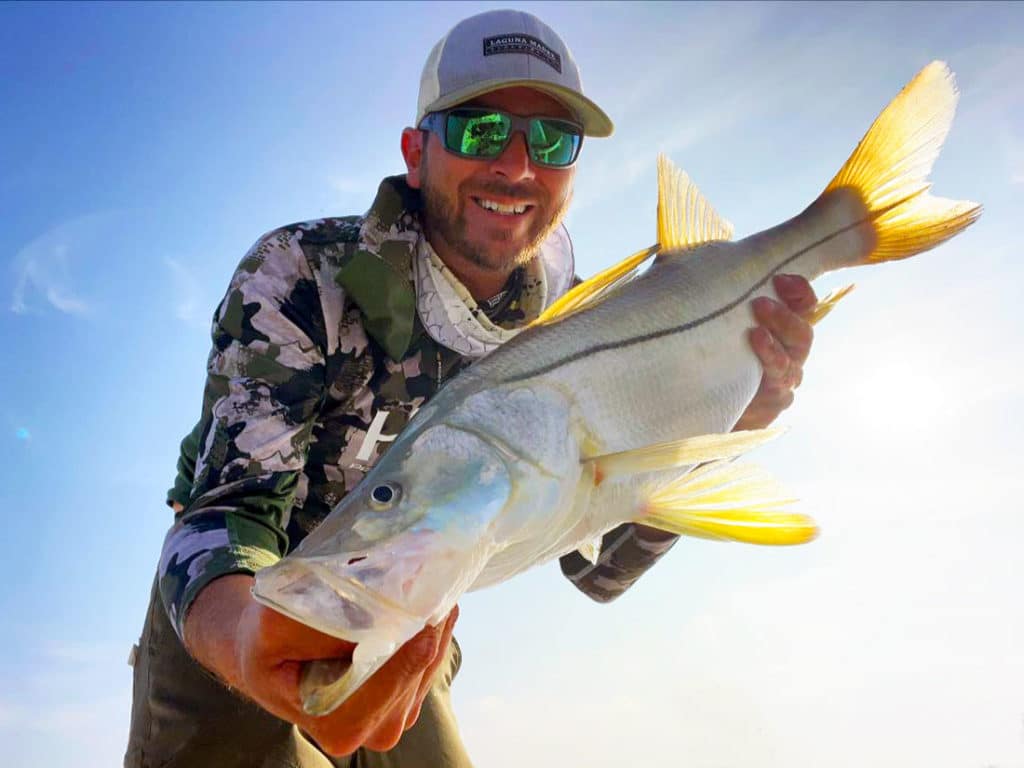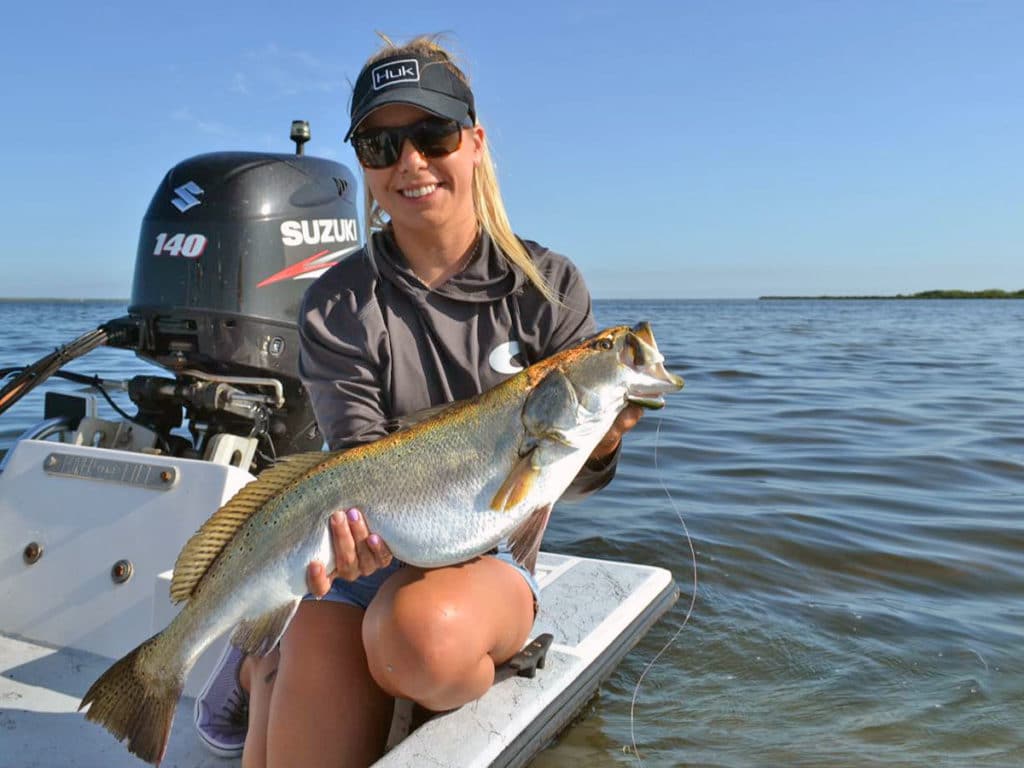
Most folks might believe you can only chase snook in the U.S. in the southern waters of Florida. That’s not quite true. The southern Texas coast also has snook, with some guides getting pretty good at targeting them.
Captain Brian Barrera, of South Padre Island, Texas, is coming off his best-ever snook fishing trip. “We caught 151 snook between four people,” he said. While those numbers are unprecedented, he has been averaging a dozen snook each trip.
Texas snook fishing is never going to pass up Florida snook fishing; most of Texas isn’t warm enough year-round, so the snook numbers and areas to catch them will always be limited. When Barrera isn’t targeting winter snook, he goes for redfish and speckled trout on the shallow flats of Lower Laguna Madre. “We’re limiting out, with plenty of over-slot fish released too,” he said.
Barrera says winter is the best time for snook and trophy speckled trout. As the water cools through January into March, snook congregate along deep channel ledges while the reds and trout move onto grass and sand flats.
To target snook, Barrera fishes waters as deep as 30 feet. Using his fishfinder, he looks for the thermocline where the warmer surface water changes to cooler deep water. “There is a 3- to 5-foot area where the fish are comfortable,” he explained. With side-scan sonar on his Humminbird finder, he can see snook hanging in specific depths of the water column.
When he marks the fish, he works a 3-inch D.O.A. lures shad tail on a 3⁄8-ounce jighead. He works the optimal temperature zone by jigging the lure or using a fast retrieve.
Seatrout and Redfish Reign Supreme in Texas

On warm days, Barrera fishes for redfish and trophy seatrout on the extensive shallow bars and grass. “When the wind is light, we wade, but when the wind is blowing, I’ll drift in the boat,” he said.
In the morning, he looks for fish on the grass flats near the west side of the bay. In the afternoon, he moves to the east side of the bay to fish sand flats behind the barrier islands.
On the grass, he looks for the fish to hang over open potholes waiting to ambush a bait. In the clear water over sand flats, he sight fishes for trophy trout and redfish. He uses ⅛- to ¼-ounce jighead and a 4-inch soft plastic jerk bait. “My favorite color is purple and chartreuse,” he said, emphasizing the chartreuse. For topwater, he likes a walk-the-dog style lure in pink mullet.
Barrera expects the winter action to continue until spring. He says this is the time for trophy trout, with recent catches of seatrout up to 30 inches. “People come here to catch the trout of a lifetime,” he bragged.








